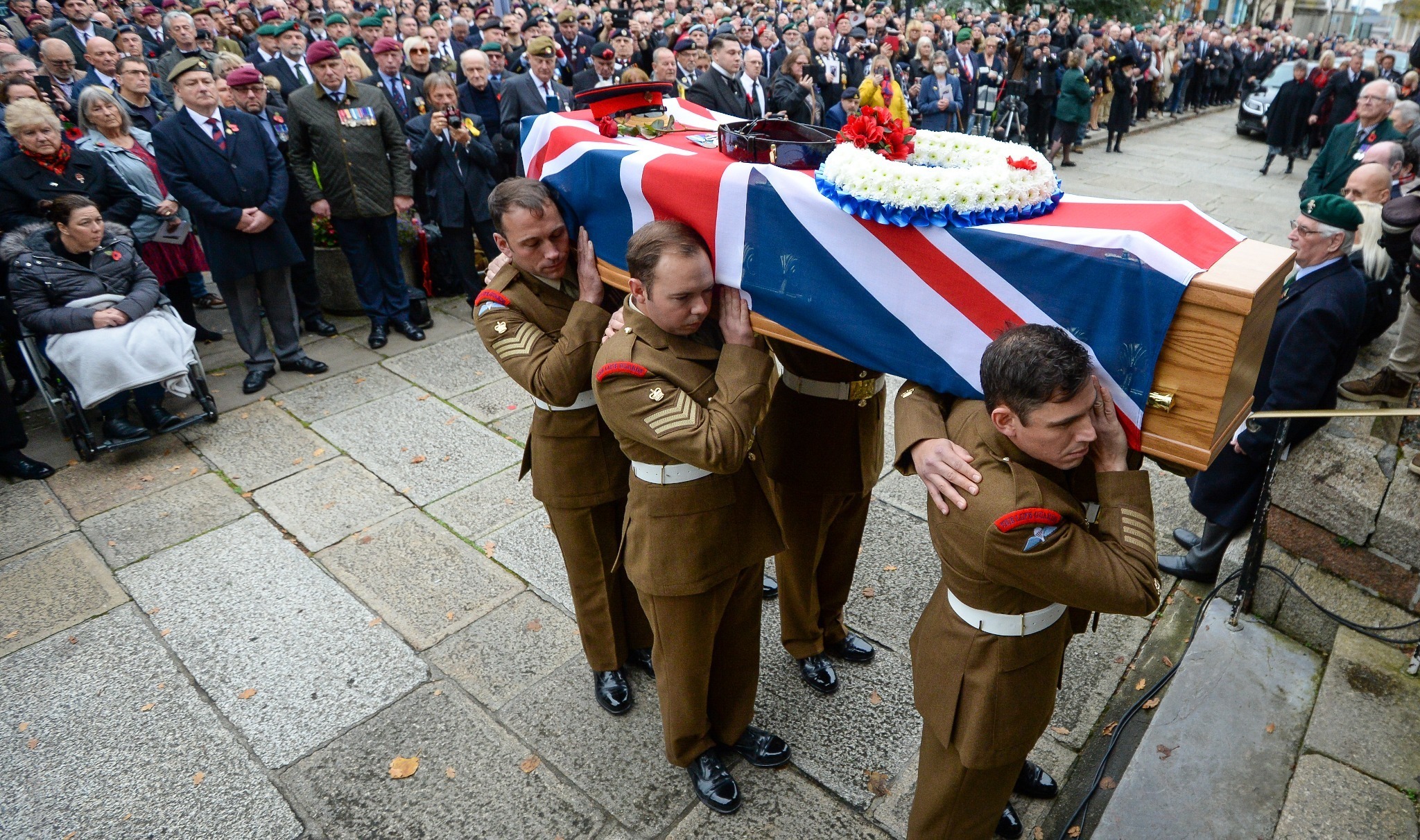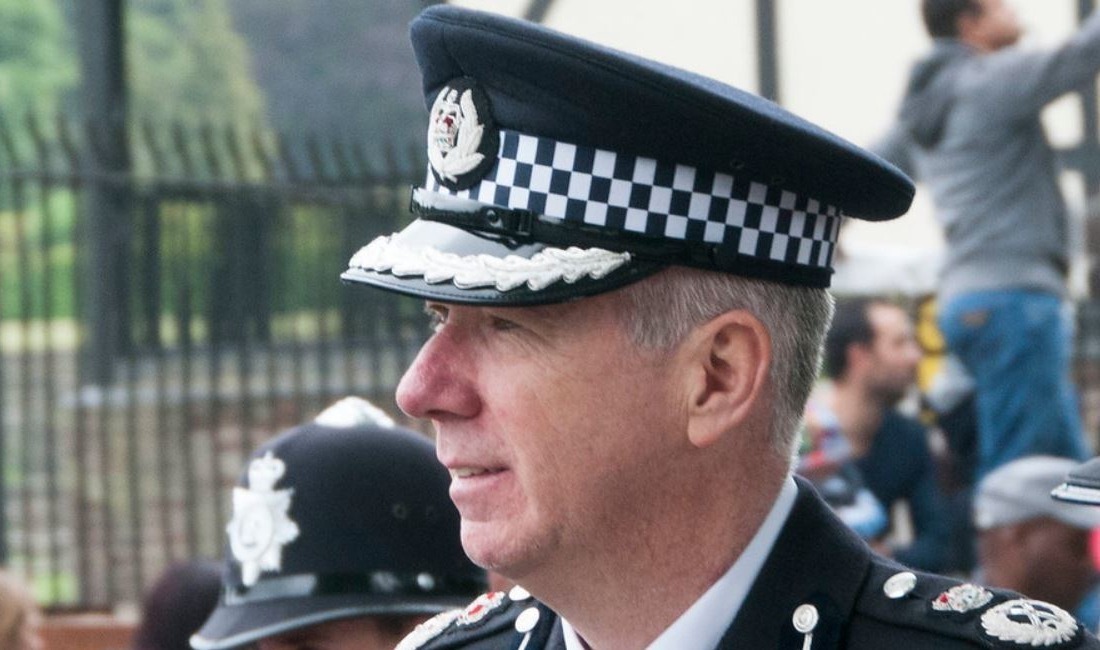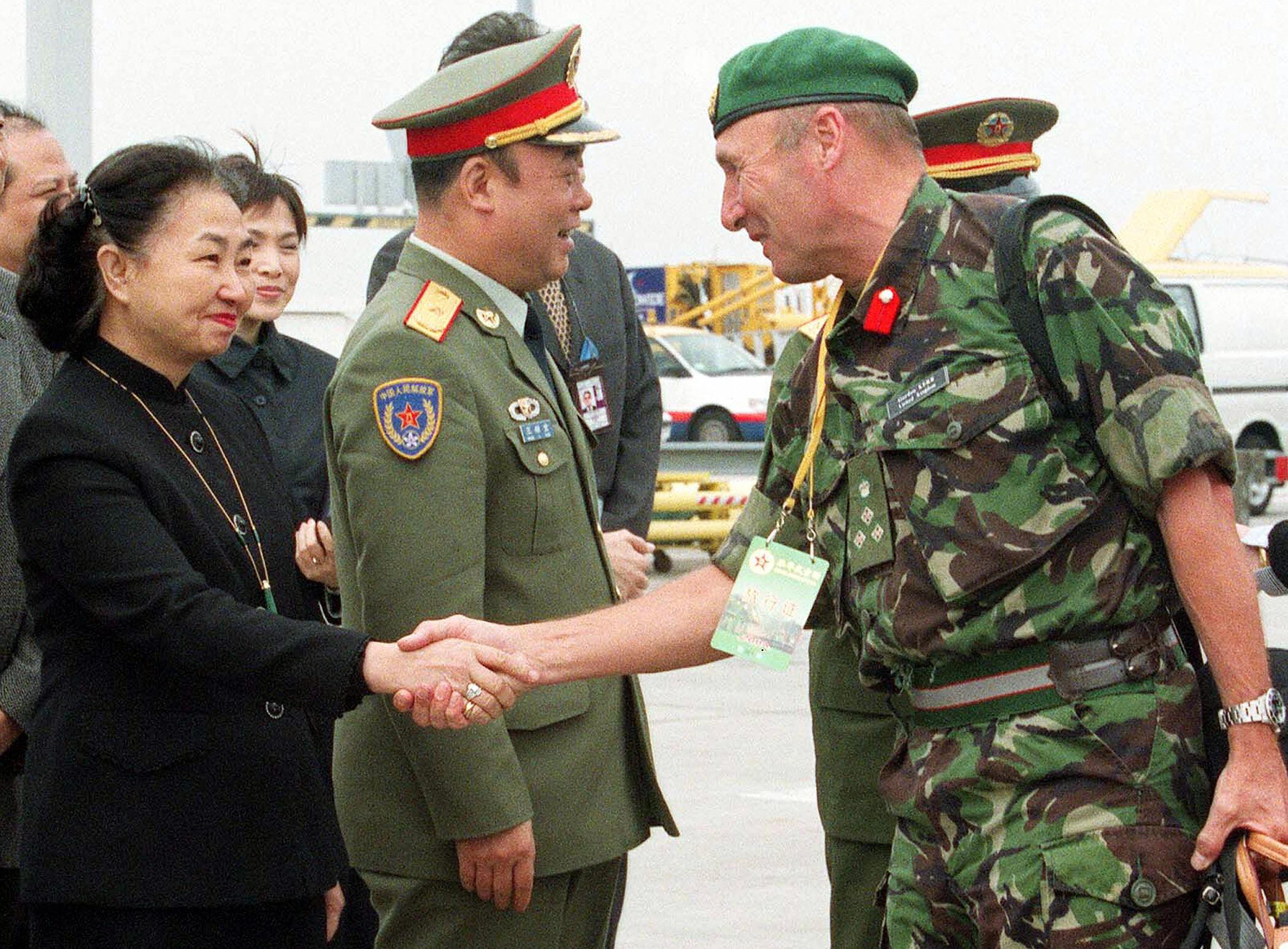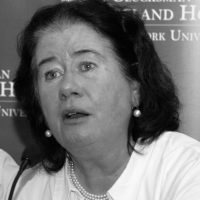Even before his “hero’s funeral”, the family and friends of John Pat Cunningham – the unarmed County Tyrone man shot in the back by British soldiers in 1974 – were reeling from acres of jingoistic press coverage.
Retired soldier Dennis Hutchings, 80, died last month of Covid-19 during his trial for John Pat’s attempted murder and attempting to cause him grievous bodily harm with intent.
Hutchings was buried today, Armistice Day, with full military trappings, in his home town of Plymouth. Speaking at his funeral, former defence minister Johnny Mercer MP called Hutchings “a good man” and “the best example of the British non-commissioned officer”.
The victim’s family, however, could only look on in growing revulsion as the man accused of shooting their relative was regally carried into church by members of the Life Guards Regiment, complete with motorcycle outriders.
The Ministry of Defence, exceptionally, authorised military pallbearers despite Hutchings dying not in battle but of natural causes, half-way through a trial where he faced serious charges.
Hutchings had in fact retired from the British army in 1985, and done quite well for himself. He set up a “hugely successful security business” which he sold to G4S in 2007 for a reputed £1 million.
The real victim
On Saturday people who support the bereaved Cunningham family are being asked to stand silently in solidarity with them at 1pm, throughout Ireland, and abroad. They are asked to declare ‘His name was John Pat Cunningham’ to remember the victim amidst all the military jamboree.
The family has already endured outrageous and untrue claims that their much-loved relative had a connection to the IRA. They also had to tolerate campaigners for Hutchings telling them they should not have allowed John Pat “out on the streets”.
In asking for a new inquest, which led to a trial, the family were also accused of “cruelly persecuting” Hutchings, who was feted by unionist politicians during his trial in Belfast with little thought for the family’s feelings.
Although the Daily Mail claimed the shooting of John Pat took place “in the heat of battle”, he was killed on a quiet afternoon in a rural area with no guns fired other than those carried by the Life Guards Regiment.
The religious order at a priory in the village of Benburb, Co. Tyrone, found John Pat, 27, occasional work and he was walking from there to his home when he was shot dead on 15 June 1974.
John Pat was a learning-disabled, vulnerable young man, known to be particularly afraid of men wearing uniforms. A prosecution witness told the trial – which was truncated after Hutchings’ death – that he would have run away from anyone wearing a uniform, be they police or soldiers.
John Pat’s right to life, the family says, has been disregarded by politicians from top to bottom and his existence has been discarded, rather like the regimental log at the time of his killing describing him as “the village idiot”.
During a recent visit to Armagh, just ten miles from where John Pat was shot, Boris Johnson said he “felt very, very sad for him [Hutchings] and for all his family”. Johnson did not once mention the victim.
British politicians with no apparent knowledge of the case, such as Mike Hookem, then MEP for Yorkshire and North Lincolnshire, said Hutchings’ prosecution was “an absolute disgrace” and a “political witch-hunt”.
Hookem, not apparently having benefited from reading the evidence, said he was confident that Hutchings was “acting in the line of duty” and “defending himself” when he fired three times in John Pat’s direction.
Hutchings claimed in a Daily Telegraph article published just days before the trial began that these were warning shots fired “all in the air”. But instructions for British forces in Northern Ireland, known as the Yellow Card, forbade troops from firing warning shots.
The Independent Press Standards Organisation (IPSO) is currently investigating the Telegraph story which also stated: “Another soldier – known only as Soldier B and who has since died – is thought to have fired the fatal shots”.
The Pat Finucane Centre, acting for the bereaved Cunningham family, lodged the IPSO complaint asking who “thought” this and claiming it was presented “in a misleading or distorted manner” before a judge could hear the facts.
‘No comment’
Five shots were fired towards the fleeing John Pat, three by Dennis Hutchings and two by his subordinate “Soldier B”. John Pat had three injuries but it is still not known if one (or more) of the shots fired by Hutchings hit him as one of the bullets could have caused two of the injuries.
Hutchings himself consistently replied “no comment” when interviewed – firstly when questioned three days after the shooting in June 1974, then again in 1975.
When the police Historical Enquiries Team asked to interview him in 2011, Hutchings’ solicitors said he would not be interviewed voluntarily, or give a voluntary prepared statement.
If he was arrested and interviewed under caution, they said, he would refuse to answer questions.
More recently, Hutchings again gave “no comment” interviews to the Legacy Investigation Branch of the Police Service of Northern Ireland in 2015. It was only after he was charged that his defence suggested, in court, that “Soldier B” had fired the fatal shots.
Those who claim a “witch-hunt” or “vexatious charges” are, by implication, impugning police officers along with lawyers in the Public Prosecution Service and two judges. They all decided, having examined the facts, that Hutchings had a case to answer.
And those who say Hutchings was a highly professional patrol leader have to ask themselves why he did not cooperate with detectives for over four decades after the killing.
Either some of his shots hit John Pat, or if he missed completely then his silence helped cover up for his junior colleague. Neither scenario is particularly heroic or befitting a military funeral.
Today, the Cunningham family simply want to say that – in life – John Pat had a right to walk home from his work in peace without being shot in the back. In death, he had a right to justice. In reality, he got neither.
Both authors work for The Pat Finucane Centre which advocates on behalf of the Cunningham family.





